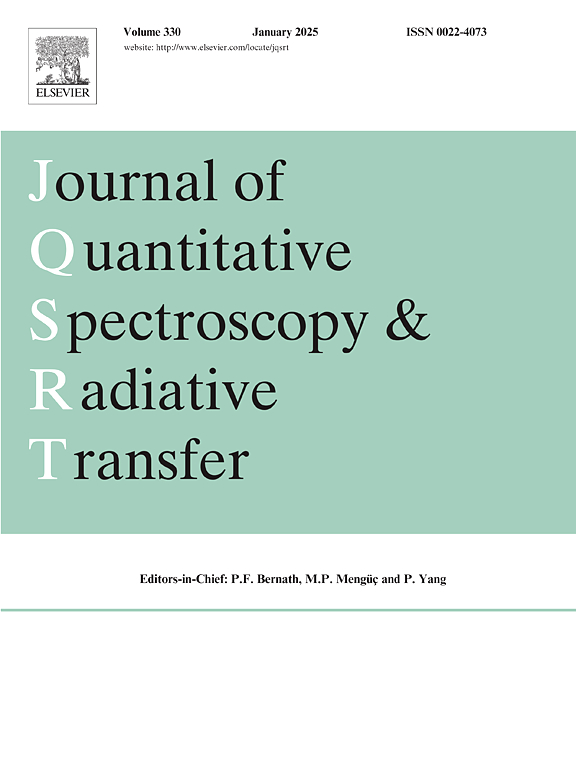Quantum Stark widths of N IV-V and O IV spectral lines
IF 2.3
3区 物理与天体物理
Q2 OPTICS
Journal of Quantitative Spectroscopy & Radiative Transfer
Pub Date : 2025-05-06
DOI:10.1016/j.jqsrt.2025.109505
引用次数: 0
Abstract
In this paper, we report new quantum Full Widths at Half Maximum (FWHM) intensities for 24 spectral lines corresponding to various nitrogen and oxygen ions, including 13 N IV, 4 N V and 7 O IV lines. The majority of the spectral lines examined were recently identified in the CASPEC and UVES spectra of the O(He) star JL9, which is a hot hydrogen-deficient pre-white dwarf (pre-WD). These recent findings motivate us to compute their Stark widths in order to address the gaps in the STARK-B database. Part of the present quantum results are compared to the available theoretical and experimental data. Our quantum method, which was developed years ago and has consistently yielded reliable results compared to other approaches, can serve as a valuable tool to clarify the discrepancies observed for certain spectral lines. Additionally, the results obtained can be applied to determine elemental abundances, calculate stellar opacity, interpret and model stellar spectra, analyze observed spectra in such stars, estimate radiative transfer through stellar plasmas, and more. A portion of the current results will also be incorporated into the STARK-B database of Stark broadening parameters. Prior to evaluating the Stark widths, two computational steps were performed: first, the atomic structure was calculated, followed by the electron–ion collision calculations. We present our results for these spectral lines at various temperatures and densities.
N IV- v和O IV谱线的量子斯塔克宽度
本文报道了不同氮、氧离子对应的24条谱线,包括13条N IV、4条N V和7条O IV谱线的半最大量子全宽度(FWHM)。研究的大部分谱线是最近在O(He)星JL9的CASPEC和UVES光谱中发现的,JL9是一颗热缺氢的预白矮星(pre-WD)。这些最近的发现促使我们计算它们的Stark宽度,以解决Stark - b数据库中的差距。部分量子计算结果与现有的理论和实验数据进行了比较。我们的量子方法是多年前开发的,与其他方法相比,它一直产生可靠的结果,可以作为澄清某些光谱线观察到的差异的有价值的工具。此外,获得的结果可以应用于确定元素丰度,计算恒星不透明度,解释和建立恒星光谱模型,分析在这类恒星中观测到的光谱,估计通过恒星等离子体的辐射传输等等。目前结果的一部分也将被纳入Stark - b Stark展宽参数数据库。在计算Stark宽度之前,进行了两个计算步骤:首先计算原子结构,然后进行电子-离子碰撞计算。我们给出了这些谱线在不同温度和密度下的结果。
本文章由计算机程序翻译,如有差异,请以英文原文为准。
求助全文
约1分钟内获得全文
求助全文
来源期刊
CiteScore
5.30
自引率
21.70%
发文量
273
审稿时长
58 days
期刊介绍:
Papers with the following subject areas are suitable for publication in the Journal of Quantitative Spectroscopy and Radiative Transfer:
- Theoretical and experimental aspects of the spectra of atoms, molecules, ions, and plasmas.
- Spectral lineshape studies including models and computational algorithms.
- Atmospheric spectroscopy.
- Theoretical and experimental aspects of light scattering.
- Application of light scattering in particle characterization and remote sensing.
- Application of light scattering in biological sciences and medicine.
- Radiative transfer in absorbing, emitting, and scattering media.
- Radiative transfer in stochastic media.

 求助内容:
求助内容: 应助结果提醒方式:
应助结果提醒方式:


